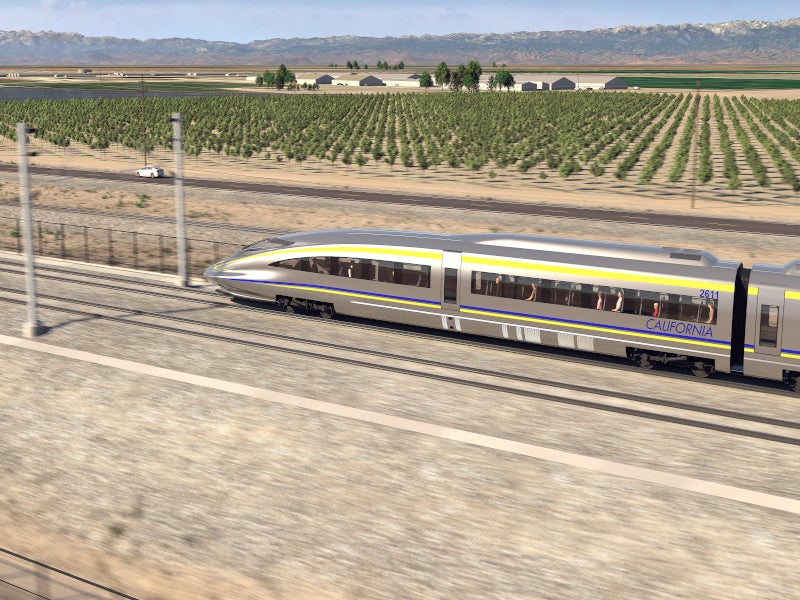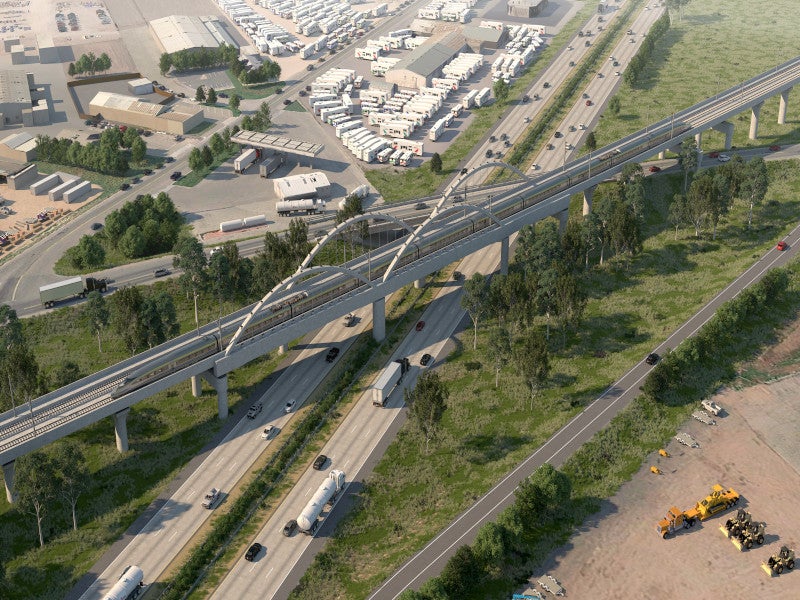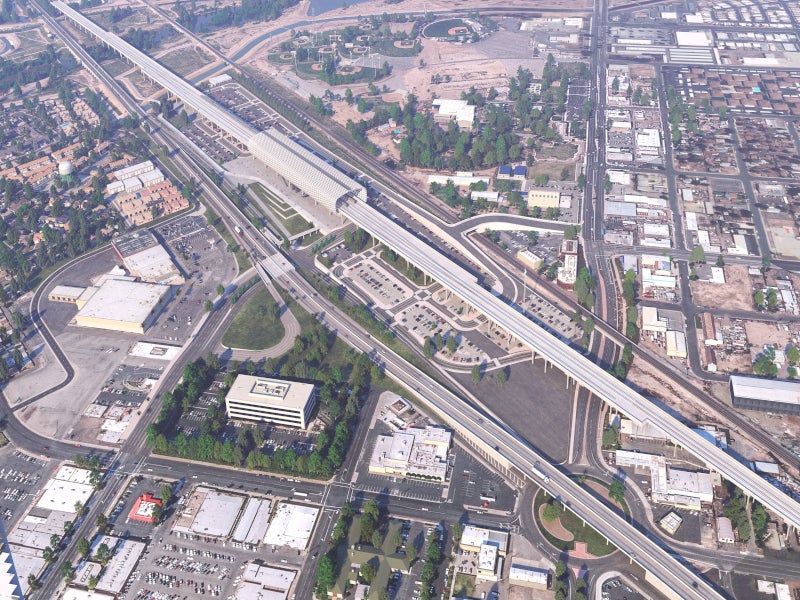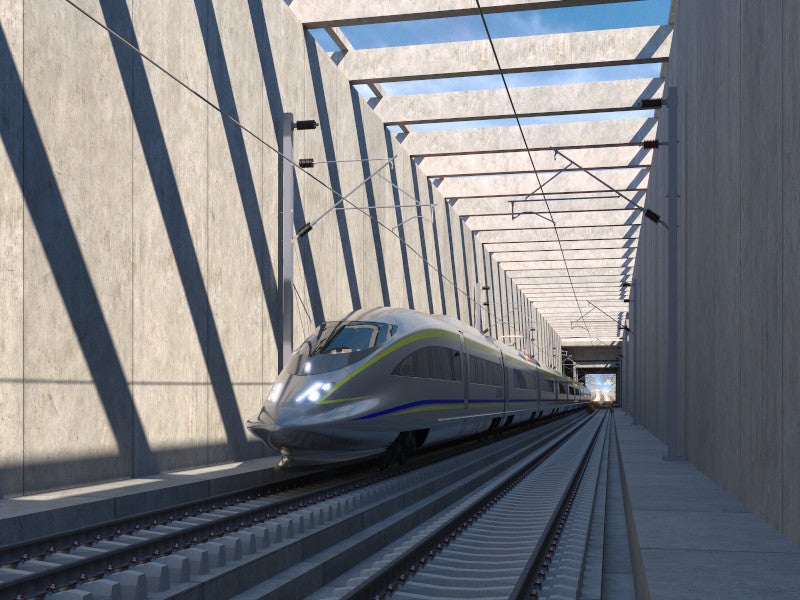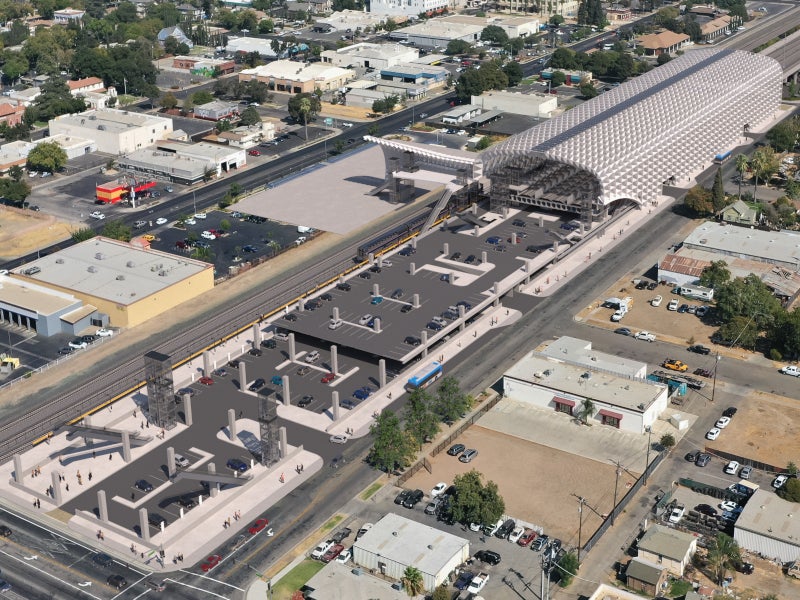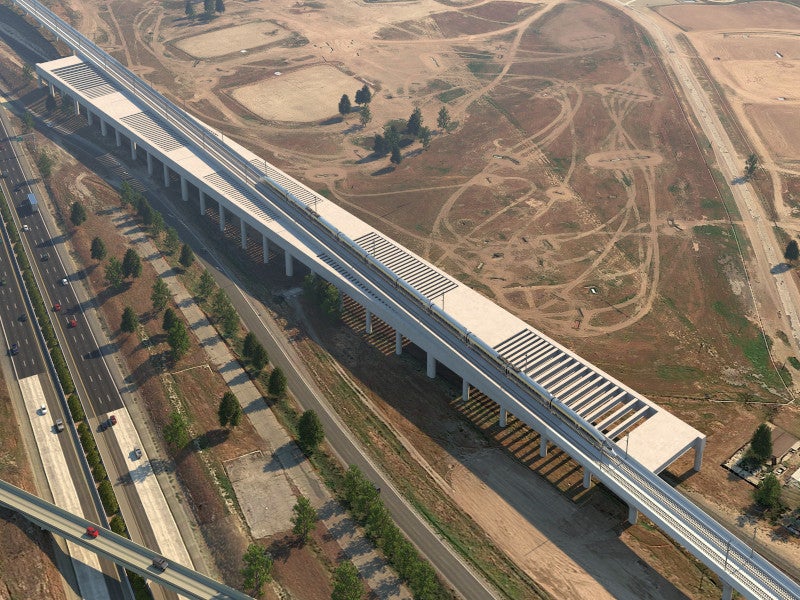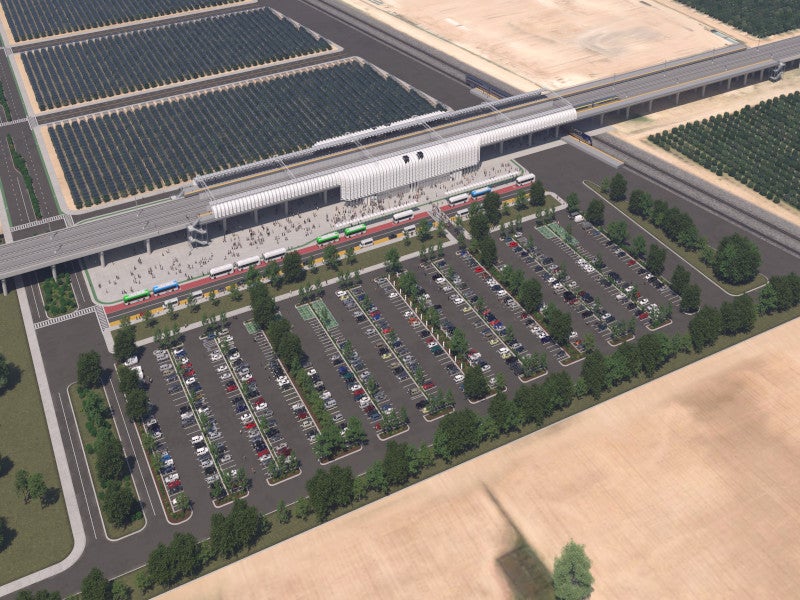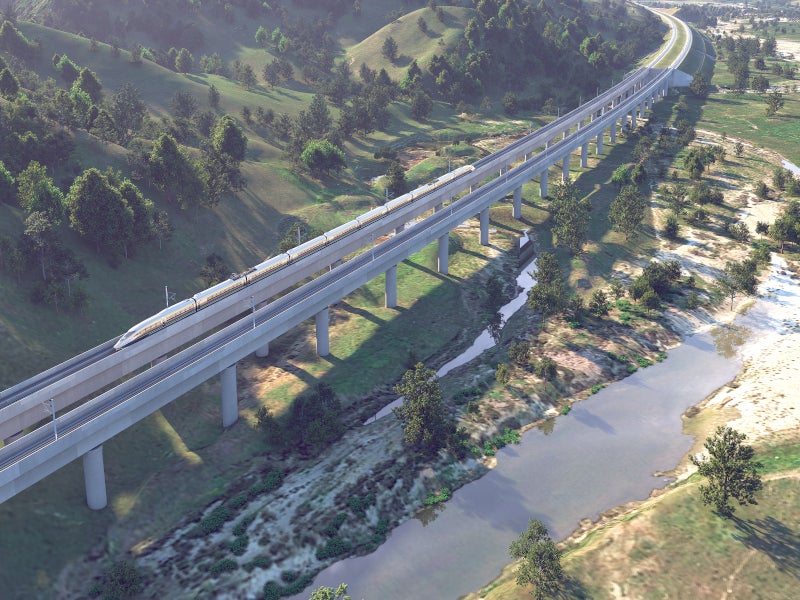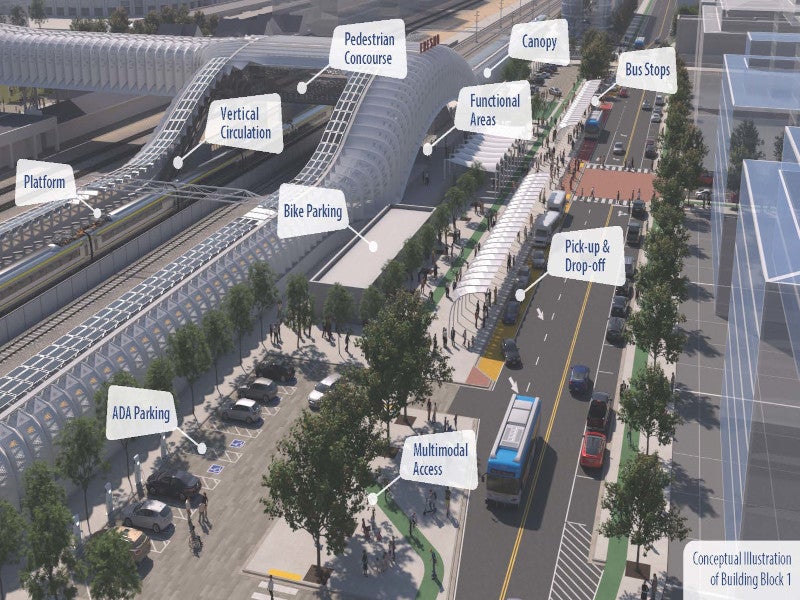The 1,287km California high-speed rail project is being developed to meet the growing demand for travel in the US. The California High-Speed Rail Authority (CHSRA) is the governing body overlooking the project.
CHSRA broke ground for the project in Fresno in January 2015. The first 273.6km-long segment in the Central Valley is expected to become operational by 2028.
The project will connect San Francisco to Los Angeles in less than three hours at a speed of about 350km/h by 2033. It will reduce carbon dioxide emissions by three million tonnes and divert more than a third of air travel journeys and about 6% of road journeys.
California high-speed train project development background
The national government had to upgrade its transport system considering the population growth estimates for California. A detailed study showed that high-speed lines are economically, environmentally and socially profitable, and one was therefore proposed in 2000.
The California high-speed train project is the first high-speed train system to be implemented in the US. An implementation plan was approved in August 2005.
In April 2009, the US national government, through the American Recovery and Reinvestment Act (2009), committed $8bn as an initial investment and $1bn a year for five years to develop high-speed rail projects across ten major corridors.
The decision to start the project was made in 2011, after detailed environmental studies and public opinion gathering. An initial funding bill for the construction of a 209km stretch of the project was signed in July 2012.
In September 2012, a 104.6km section of the project was approved by the US Federal Railroad Administration. The work has been divided into a number of smaller projects.
California high-speed rolling stock and infrastructure
The project will incorporate a ruling gradient of 3%, which will allow for a comfortable high-speed journey. At certain locations, the high-speed line is expected to use viaducts and tunnels, in a similar manner to other high-speed rail projects worldwide.
The train technology will be based on already proven high-speed trains from similar systems in Japan, Germany, and France. Each train will be up to 1,300ft-long and capable of carrying 1,300 passengers. The trains would carry up to 115,000 passengers a day along the 1,287km route.
A variety of different cars will be included in the formation such as quiet cars, play areas for younger families, café and bar cars, and possibly even a conference facility. It is expected that 150 intercity trains will operate through the line each day.
The electric-powered, high-speed train system would draw electric power from overhead wires connected to the commercial power grid. In braking, it would regenerate electricity back to the grid, conserving power and reducing costs.
The high-speed train will reflect the design of the new Series 500 and 700 Shinkansen trains that operate with a maximum speed of approximately 187mph in Japan and French TGV and Automotrice Grande Vitesse. Steel-wheel-on-steel-rail technology has been preferred to magnetic levitation systems technology.
The railway stations on the line will have parking, transit facilities, passenger pick-up and drop-off spots, platforms, canopies, vertical circulation and concourse, functional and operational spaces, and station access.
Signalling and communications
High-speed train traffic control and communications systems are centrally regulated and managed during all hours of operation. These systems monitor and limit the train’s speed, schedule, routing, and headway.
A sophisticated signalling and communication system is in the early planning stages. One proposal is to install intrusion alarms on the fencing, which would be linked to a central control system capable of detecting foreign objects on the tracks.
In-cab signalling will be capable of automatically stopping trains if necessary.
Routes
On 15 November 2007, the authority issued a recommendation that the high-speed rail follow the Pacheco Pass route, rather than the Altamont route as the preferred high-speed train alignment between the Central Valley and the Bay Area. Similarly, the route via Palmdale is selected between the Central Valley and Los Angeles for the rail network.
Financing
The high-speed train system is estimated to cost $68bn. Only partial state and federal/national financing have been approved for the project, which includes $2.6bn in state bonds.
The federal government is to provide 25% to 33% of construction costs ($10bn to $12bn). Another $4.5bn to $7bn will be generated through public-private partnership funding.
The project received funding and grants from the Federal Railroad Administration and Environmental Protection Agency totalling more than $930m in 2022.
It also received a $25m grant under the Rebuilding American Infrastructure with Sustainability and Equity programme.
The authority has received up to $3.07bn from the $8.2bn announced by the Biden-Harris Administration in December 2023.
Contractors involved
A $71.86m contract for providing design and construction oversight for Construction Package 2-3 was awarded to ARCADIS US in August 2014.
Construction Package 2-3 involves the widening of more than 96.5km through the Fresno-Tulare-Kern County line.
Chaudhary & Associates, Hernandez, Kroone & Associates, Mark Thomas and Company, O’Dell Engineering and Quad Knopf, were awarded a right-of-way engineering and surveying contract.
In 2013, the Tutor Perini/Zachry/Parsons joint venture was awarded the $1bn design-build contract for the first 46.6km section between Madera and Fresno. The second 96.5km section was contracted to the Dragados/Flatiron/Shimmick JV in January 2015.
PGH Wong Engineering and Harris & Associates were awarded the project and construction management contract for a 48km stretch between Madera and Fresno in January 2013.
Parsons Brinckerhoff consortium was awarded a $700m contract to provide integration, programme delivery, operations and management services. Consortium partners include Network Rail Consulting and LeighFisher.
Jacobs Engineering won a $1.2bn contract to provide design services for the second 96.5km section of the project.
STV was chosen to prepare environmental and engineering documents for the sections between Burbank and Los Angeles, as well as Los Angeles and Anaheim. Sener Engineering and SYS, HNTB, and T Y Lin International are the other regional consultants for the project.
In March 2016, Ferrovial Agroman received a $442m contract for Construction Package 4 to design and build a section of the California high-speed railway in the Central Valley. The contract value also includes $107m for relocation of gas, power, and communications networks.
Tutor-Perini/Zachry/Parsons, a design-build company, started construction on the Cedar Viaduct in 2018.
WSP, Stantec Consulting Services, Foster and Partners, and Arup are other contractors involved in the project.

